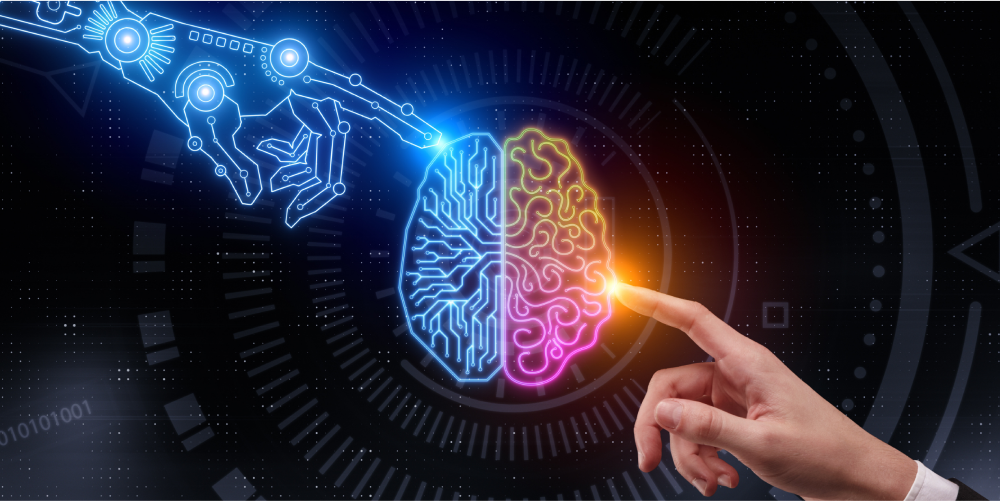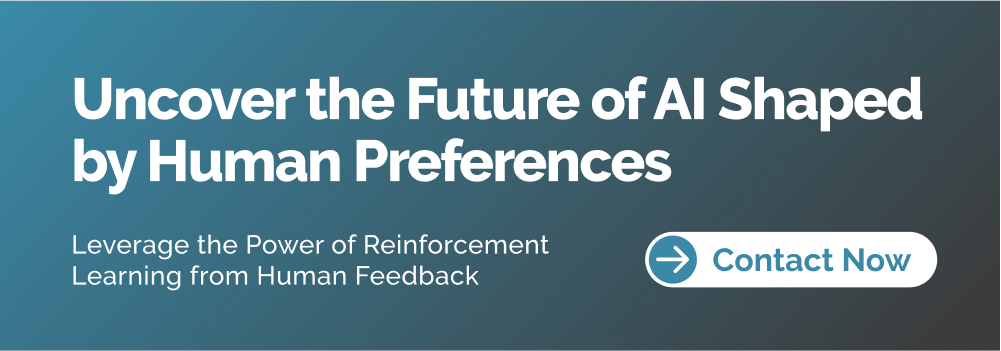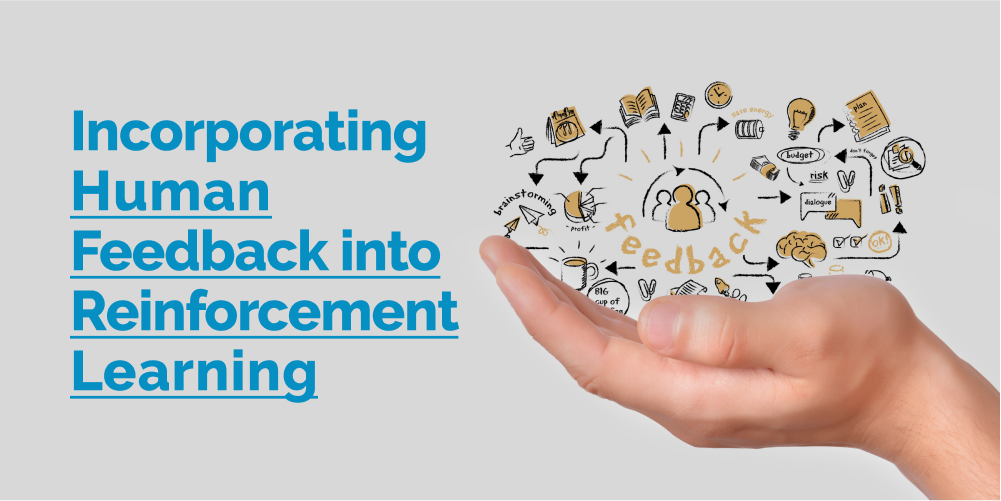Artificial Intelligence, zBlog
Incorporating Human Feedback into Reinforcement Learning: A Transformative Approach
Team Trantor | Updated: May 10, 2024
Introduction
In the rapidly evolving field of artificial intelligence (AI), reinforcement learning (RL) has emerged as a powerful paradigm for training intelligent agents to make optimal decisions in complex environments. Traditional RL algorithms rely on reward signals generated by the environment to guide the learning process, allowing agents to autonomously discover strategies that maximize cumulative rewards. However, in many real-world applications, defining precise reward functions can be challenging, and relying solely on environmental rewards may not capture the nuances and preferences of human users.
Enter reinforcement learning from human feedback (RLHF), a transformative approach that incorporates human preferences and judgments directly into the learning process. By leveraging human feedback, RLHF has the potential to create AI systems that are better aligned with human values, more interpretable, and capable of adapting to the evolving needs and preferences of users.
In this comprehensive blog post, we’ll delve into the intricacies of RLHF, exploring its underlying principles, advantages, challenges, and real-world applications. We’ll also discuss emerging techniques and research directions that are shaping the future of this exciting field.
Understanding Reinforcement Learning from Human Feedback (RLHF)

Reinforcement learning from human feedback is a paradigm that combines the power of traditional reinforcement learning with the invaluable insights and preferences provided by human users. Instead of relying solely on environmental rewards, RLHF incorporates human feedback as an additional reward signal, guiding the learning process toward outcomes that align with human values and preferences.
The core idea behind RLHF is to create an AI agent, often referred to as a reward model, that can accurately predict the preferences and judgments of humans based on their feedback. This reward model is then used to generate reward signals that guide the training of a separate policy model, which learns to take actions that maximize the predicted human preferences.
RLHF can be implemented using various techniques, such as:
- Preference Learning: In this approach, humans provide comparative feedback by indicating their preferences between different outcomes or behaviors. The reward model learns to predict these preferences, enabling the policy model to optimize for actions that align with human judgments.
- Human Evaluation: Humans directly evaluate the behavior or outputs of the AI agent, providing scalar ratings or rankings. The reward model learns to map these evaluations to a reward signal, which guides the policy model’s learning process.
- Interactive Learning: In this iterative approach, humans provide feedback during the agent’s decision-making process, allowing for real-time adjustments and refinements of the reward model and policy model.
By incorporating human feedback into the reinforcement learning process, RLHF aims to create AI systems that are more trustworthy, interpretable, and aligned with human values and preferences.
Advantages of Reinforcement Learning from Human Feedback

Incorporating human feedback into reinforcement learning offers several advantages over traditional RL approaches:
- Better Alignment with Human Values: RLHF enables the creation of AI systems that are better aligned with human values and preferences, reducing the risk of unintended consequences or misalignment between the agent’s behavior and human expectations.
- Increased Interpretability: By leveraging human feedback, RLHF can produce AI models that are more interpretable and explainable, as their behavior is directly shaped by human judgments and preferences.
- Adaptability to Changing Preferences: Human preferences and values can evolve over time. RLHF allows AI systems to adapt to these changing preferences by continuously incorporating new feedback, enabling a more dynamic and responsive learning process.
- Handling Complex and Subjective Tasks: Many real-world tasks involve subjective elements or nuanced preferences that are difficult to capture with precise reward functions. RLHF can handle these complexities by relying on human feedback to guide the learning process.
- Increased Trust and Acceptance: By involving humans in the learning process and aligning AI systems with human values, RLHF can foster greater trust and acceptance of AI technologies among users and stakeholders.
Challenges and Considerations

While RLHF offers significant advantages, it also presents several challenges and considerations that must be addressed:
- Scalability and Efficiency: Obtaining human feedback can be time-consuming and resource-intensive, especially for large-scale applications. Efficient methods for collecting and incorporating human feedback at scale are crucial for the practical deployment of RLHF.
- Consistency and Bias Mitigation: Human feedback can be inconsistent, biased, or influenced by various factors, such as cultural backgrounds, personal preferences, or cognitive biases. Strategies for mitigating these biases and ensuring consistent feedback are essential for reliable RLHF systems.
- Human-AI Interaction Design: Designing effective interfaces and interaction mechanisms for humans to provide meaningful feedback is a critical challenge. Intuitive and user-friendly interfaces can facilitate better communication between humans and AI agents, improving the quality of feedback and the overall learning process.
- Reward Modeling Complexity: Developing accurate reward models that can reliably predict human preferences based on feedback is a non-trivial task. Advanced machine learning techniques, such as deep neural networks or Bayesian models, may be required to capture the complexities of human preferences.
- Exploration vs. Exploitation Trade-off: RLHF systems must strike a balance between exploring new strategies based on human feedback and exploiting existing knowledge to make optimal decisions. Effective exploration strategies are crucial for discovering novel solutions while maintaining overall performance.
- Privacy and Security Considerations: Incorporating human feedback may raise privacy and security concerns, particularly when dealing with sensitive or personal data. Robust mechanisms for data protection and anonymization are necessary to ensure the responsible and ethical deployment of RLHF systems.
Despite these challenges, ongoing research and advancements in machine learning, human-computer interaction, and ethical AI are paving the way for more effective and scalable RLHF solutions.
Best Practices and Techniques

To maximize the benefits of RLHF and mitigate potential challenges, it’s essential to adopt best practices and leverage emerging techniques in this field:
- Active Learning and Adaptive Sampling: Active learning techniques can be employed to selectively query humans for feedback on the most informative or uncertain instances, reducing the overall amount of feedback required while maximizing learning efficiency.
- Preference-Based Feedback: Instead of relying on scalar ratings or rankings, preference-based feedback techniques, such as pairwise comparisons or choice-based feedback, can capture more nuanced human preferences and reduce cognitive biases.
- Multi-Agent Reinforcement Learning: Combining RLHF with multi-agent reinforcement learning can enable the creation of diverse and robust AI agents that can learn from the collective feedback of multiple human users, mitigating individual biases and capturing a broader range of preferences.
- Transfer Learning and Meta-Learning: Leveraging transfer learning and meta-learning techniques can accelerate the RLHF process by transferring knowledge from related tasks or domains, reducing the amount of human feedback required for new tasks or environments.
- Interpretable and Explainable AI: Developing interpretable and explainable AI models can facilitate better human-AI interaction and enable more effective feedback loops. Techniques such as attention mechanisms, saliency maps, or rule-based models can increase the transparency and interpretability of RLHF systems.
- Human-AI Collaboration and Mixed-Initiative Systems: Exploring collaborative frameworks where humans and AI agents work together, complementing each other’s strengths, can lead to more effective and trustworthy RLHF systems. Mixed-initiative systems that combine human guidance with AI autonomy can leverage the best of both worlds.
- Ethical and Responsible AI Practices: Adopting ethical and responsible AI practices, such as fairness and bias mitigation, privacy preservation, and transparency, is crucial for the responsible deployment of RLHF systems, fostering public trust and acceptance.
By embracing these best practices and techniques, organizations can overcome the challenges of RLHF and unlock its transformative potential for creating AI systems that are better aligned with human values and preferences.
Real-World Applications and Case Studies

RLHF has already demonstrated its potential in various real-world applications, spanning industries and domains. Here are some notable case studies and examples:
- Conversational AI and Language Models: RLHF has been applied to train large language models, such as those used in conversational AI assistants like Claude. By incorporating human feedback on the quality, coherence, and appropriateness of the model’s responses, RLHF can help create language models that better align with human preferences and communication styles.
- Robotics and Automation: In the field of robotics and automation, RLHF can be used to train robots to perform complex tasks while adhering to human preferences and safety constraints. For example, robots can learn to manipulate objects or navigate environments based on human feedback, ensuring their behavior aligns with user expectations and safety protocols.
- Game AI and Interactive Agents: RLHF has found applications in the gaming industry, where it can be used to train non-player characters (NPCs) or AI agents to exhibit more human-like behavior and decision-making. By incorporating feedback from human players, these agents can learn to adapt their strategies and actions to better align with player preferences and expectations, enhancing the overall gaming experience.
- Recommendation Systems: Reinforcement learning from human feedback can be leveraged to improve recommendation systems, such as those used in e-commerce, entertainment, or content curation platforms. By learning from user feedback on recommended items or content, these systems can better understand individual preferences and provide more personalized and relevant recommendations.
- Healthcare and Medical Applications: RLHF holds promise in healthcare applications, such as treatment planning or decision support systems. By incorporating feedback from medical professionals and patient preferences, AI systems can learn to make more informed and personalized treatment recommendations, taking into account individual needs and values.
- Autonomous Vehicles and Transportation: In the domain of autonomous vehicles and transportation, RLHF can be used to train self-driving systems to navigate and make decisions that align with human preferences and driving styles. By incorporating feedback from human drivers or passengers, these systems can learn to adapt to different driving scenarios and prioritize factors such as safety, comfort, and efficiency.
- Intelligent Tutoring Systems: RLHF can be applied to create intelligent tutoring systems that adapt to individual student learning styles and preferences. By incorporating feedback from students and educators, these systems can learn to provide personalized learning experiences, adjusting the content, pace, and teaching methods to maximize student engagement and understanding.
These examples showcase the versatility and potential of RLHF in a wide range of applications, demonstrating its ability to create AI systems that are better aligned with human values and preferences, while also fostering trust and acceptance among users and stakeholders.
Case Study: Anthropic’s Constitutional AI

Anthropic, a leading AI research and Generative AI company, has been at the forefront of developing AI systems that are aligned with human values and preferences. One of their flagship projects is Constitutional AI, which leverages RLHF to create AI agents that adhere to predefined rules and constraints, known as a “constitution.”
In the case of Anthropic’s AI assistant, Claude, the constitutional framework ensures that the agent operates within certain ethical boundaries, respects individual privacy, and avoids engaging in harmful or deceptive behavior. This is achieved by incorporating human feedback during the training process, allowing the AI to learn and refine its behavior based on human judgments and preferences.
The constitutional approach employed by Anthropic not only enhances the trustworthiness and reliability of their AI systems but also serves as a powerful example of how RLHF can be used to create AI agents that are better aligned with human values and ethical principles.
The Future of Reinforcement Learning from Human Feedback

As the field of AI continues to advance, reinforcement learning from human feedback is poised to play an increasingly significant role in shaping the development of intelligent systems that are truly aligned with human values and preferences. Here are some exciting future directions and research avenues:
- Scalable and Efficient Feedback Collection: Developing scalable and efficient methods for collecting and incorporating human feedback will be crucial for the widespread adoption of RLHF. This may involve leveraging techniques such as crowdsourcing, active learning, and online learning algorithms to minimize the amount of feedback required while maximizing its impact.
- Multimodal Feedback Integration: As AI systems become more capable of processing and generating multimodal data (e.g., text, images, audio, video), RLHF techniques will need to evolve to incorporate human feedback across multiple modalities. This will enable the creation of AI agents that can understand and respond to human preferences in a more natural and intuitive manner.
- Continuous Learning and Adaptation: Future RLHF systems may need to continuously learn and adapt to evolving human preferences and changing environments. This could involve developing techniques for online learning, lifelong learning, and transfer learning, allowing AI agents to seamlessly incorporate new feedback and adapt their behavior over time.
- Collaborative Human-AI Interaction: As RLHF systems become more prevalent, there will be an increased focus on developing collaborative frameworks where humans and AI agents work together in a synergistic manner. This could involve mixed-initiative systems, human-in-the-loop approaches, or interactive learning scenarios where humans and AI agents learn from each other in real time.
- Personalized and Context-Aware AI: By leveraging RLHF techniques, future AI systems may be able to adapt to individual user preferences and contextual factors, providing personalized experiences and tailored assistance. This could involve developing user-specific reward models or leveraging techniques from personalized and context-aware computing.
- Fairness, Accountability, and Transparency: As RLHF systems become more prevalent, ensuring fairness, accountability, and transparency in the learning process and decision-making will be crucial. This may involve developing techniques for mitigating biases, ensuring algorithmic fairness, and providing explainable and interpretable AI models.
- Ethical and Responsible AI Frameworks: With the increasing impact of AI on society, there will be a growing need for robust ethical and responsible AI frameworks to govern the development and deployment of RLHF systems. This could involve establishing best practices, guidelines, and regulatory frameworks to ensure the responsible and ethical use of these technologies.
The future of reinforcement learning from human feedback is brimming with exciting possibilities and challenges. As researchers, developers, and practitioners continue to push the boundaries of this field, we can expect to see the emergence of AI systems that are not only more capable but also more aligned with human values, preferences, and ethical principles.
Join us in exploring the frontier of human-centric AI with Trantor, a pioneering force in AI research and development. Leveraging cutting-edge techniques in machine learning, automation, and reinforcement learning, Trantor is at the forefront of creating AI systems that are not only intelligent but also deeply aligned with human values and preferences. Dive into the future of Artificial Intelligence with Trantor and discover how reinforcement learning from human feedback is shaping the next generation of intelligent systems.





